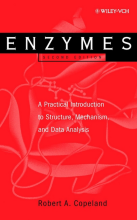Summary: Food Production And Preservation
- This + 400k other summaries
- A unique study and practice tool
- Never study anything twice again
- Get the grades you hope for
- 100% sure, 100% understanding
Read the summary and the most important questions on Food production and Preservation
-
1 Food Production
This is a preview. There are 1 more flashcards available for chapter 1
Show more cards here -
How do products end up with the consumer?
Almost never form a producer to a consumer. But it first goes to a retail and then to the consumer -
What is importent for big multinational companies like coca-cola?
That there product always has the same quality, so the producers of the raw material should produce enough and always have the same quality. -
1.1.1 A first structure of food chains
-
What are the 3 main groups in the food industry?
- harvested products --> inmediatly to the consumer (groenten, ei, vlees)
- harvested products --> converted to ingredients that are used for industries or consumers (sugar, dairy, cereals enz.)
- producten that consist of different ingredients and ore con bind into one product for consumer consumption (candy bars, ice cream, coffee, tea, infant formula enz.)
-
1.1.2 Economy of scale: why we have large producers
-
Why would a big factory be better?
quality and costs -
1.2.1 Fresh foods: vegetables, fruits; mushrooms
-
Why is a wax layer used for vegetables and fruits?
- pesticides are soluble in the hydrophobic materials
- the waxy layer is used agains moist lost
- agains microorganisms and insects
-
1.2.2 Preserved fruits and vegetables: canned, frozen and dried
-
How can you preserve fruits and vegetables?
- canning: heating in a jar
- freezing: blenching first and then freezing
- drying: castic soluting (bijtend), inactivates enzymes and then rinsing and then dried.
- freezedrying: frozen, vacuum (get crystals out)
-
1.2.3 Meat (slaughtering, ageing, fermentation of side streams; total refining of animals); Fish
-
What happens with the blood of an animal?
It is separated in plasma and clotted blood cells.
The plasma is spray dried and then used as glue to piece meat together. -
1.3 Production of ingredients
-
Witch are the steps for producing a ingredient?
- cleaning or purification of raw materials
- preparation for fractionating (vermalen)
- Fractionation
- Purification and concentration
- Stabilisation
-
1.3.1 Wheat into four or its constituents
This is a preview. There are 1 more flashcards available for chapter 1.3.1
Show more cards here -
What kind of impurities have to be removed for grain?
The parts that contain a lot of enzymes, these can be a problem later in the process. -
1.3.2 Tubers and roots into starch and other products
-
How do you get starch out of potatoes and cassava?
cleaning, mashing in water (to break the cell walls), add more water (to carry the starch away) purification, concentration (by centrifuge) filtering and stabilization (drying)
- Higher grades + faster learning
- Never study anything twice
- 100% sure, 100% understanding
Topics related to Summary: Food Production And Preservation
-
Traditional preservation - Smoking
-
Fluid Dynamics - Flow of granular materials and powders
-
Reactions and reactors - Reactions in food products
-
Reactions and reactors - Reactors - The continuous ideally stirred tank reactor (CISTR)
-
Reactions and reactors - Reactors - The plug flow reactor
-
Heating and Preservation of Solids - Blanching
-
Heating and Preservation of Solids - Quality aspects of heating of solid products - Vegetables
-
Heating and Preservation of Solids - Quality aspects of heating of solid products - Cheese
-
Preservation by Cooling and Freezing - Freezing - Ways of freezing
-
Non-thermal ways to pasteurize or sterilise



























